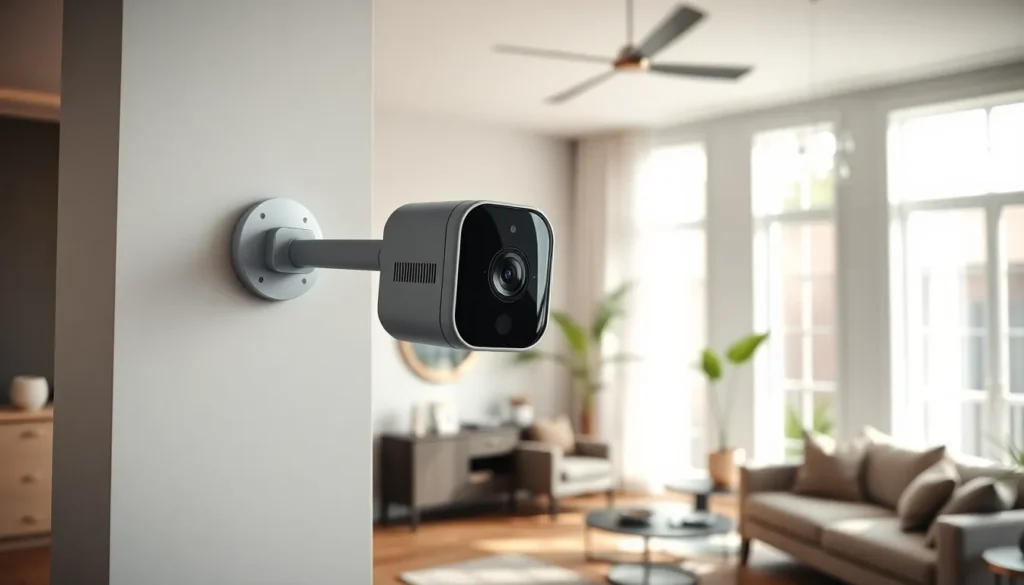In a world where gadgets multiply faster than rabbits, keeping track of their performance can feel like herding cats. Enter modular gadget scoring, the superhero of tech evaluations. It’s like giving your devices a report card, but without the awkward parent-teacher conferences. This innovative approach allows users to assess gadgets based on customizable criteria, ensuring that only the best of the best make the cut.
Overview of Modular Gadget Scoring
Modular gadget scoring represents an innovative approach to evaluating technology devices. Users customize their scoring criteria, enabling them to assess performance based on individual preferences. This system emphasizes personalization, allowing for more relevant evaluations.
Devices can be scored using various metrics, including speed, battery life, and usability. Specific scoring categories help highlight strengths and weaknesses. This method streamlines the evaluation process, reducing the complexity associated with conventional ratings.
Flexibility is a key advantage of modular scoring. Users can adjust their scoring modules to reflect their unique needs. Adding or removing criteria enhances the overall assessment experience.
Transparent scoring builds trust among users by providing clear rationale for device rankings. Metrics ensure each component contributes to an encompassing evaluation. Many users appreciate this clarity, as it supports informed decision-making.
Additionally, this scoring system encourages competition among manufacturers. Companies may prioritize improvements that meet consumer preferences. As a result, technological advancements often align better with market demands.
The introduction of modular gadget scoring has transformative potential for consumer technology. It offers tools for individuals to navigate a crowded market effectively. This evolution in device evaluation simplifies the search for optimal gadgets tailored to user requirements.
Benefits of Modular Gadget Scoring
Modular gadget scoring offers several advantages that enhance the evaluation of technology devices. It prioritizes personalization and user-centric assessments.
Increased Flexibility
Users enjoy increased flexibility with modular gadget scoring. This approach allows them to adjust scoring modules based on preferences. Device comparisons adapt to changing needs and priorities, making evaluations more relevant. Personal circumstances influence how devices are scored, whether it’s for gaming, productivity, or travel. Greater flexibility leads to a comprehensive assessment that reflects individual usage patterns. This adaptability fosters a user-friendly experience that resonates with diverse consumer demands.
Customization Options
Customization options play a significant role in modular gadget scoring. Users can create personalized scoring criteria tailored to their specific needs, such as battery longevity or user interface intuitiveness. This level of customization enables users to prioritize what matters most in their technology experience. By focusing on unique preferences, evaluations become more meaningful and insightful. Enhanced customization enhances user engagement, as individuals can tailor assessments to their lifestyle. Ultimately, this flexibility allows users to explore devices that align closely with their expectations and habits.
Key Features of Modular Gadget Scoring
Modular gadget scoring offers distinct features that enhance the evaluation of technology devices. This system focuses on adaptability and attention to user preferences.
Scoring Metrics
Scoring metrics assess multiple performance aspects, including speed, battery life, and usability. Users can assign numerical values that reflect personal priorities for each category. Each criterion allows for a detailed assessment, highlighting device strengths and weaknesses. Such a comprehensive approach enables informed comparisons among various gadgets. By utilizing defined metrics, consumers gain insights into how different devices meet their needs. Therefore, personalized scoring provides clarity in decision-making.
Integration Capabilities
Integration capabilities allow modular gadget scoring systems to connect with various platforms and tools. Users can seamlessly incorporate scoring data into existing reviews, apps, or tech databases. This compatibility enhances the accessibility of device evaluations, making them more convenient. As a result, users can engage with the scoring system across different environments. Data sharing encourages collaboration and increases the visibility of consumer preferences. Overall, strong integration strengthens the usability of modular gadget scoring, fostering a cohesive evaluation experience.
Challenges in Implementing Modular Gadget Scoring
Implementing modular gadget scoring presents several challenges that can affect its effectiveness and user adoption. One primary issue involves standardization. The absence of universally accepted scoring metrics can lead to inconsistencies among users. Different interpretations of performance categories can create confusion.
Data integration poses another hurdle. Many users may rely on various platforms for device comparisons. Integrating the modular scoring system with existing databases and tools is essential but technically demanding. Complications can arise from varying data formats, affecting seamless functionality.
Usability is crucial. Users expect a straightforward and intuitive interface to facilitate their unique scoring criteria. If the scoring system is overly complicated, it may deter engagement. Enhancing usability requires continuous feedback and iterative design improvements.
Another challenge is user education. Familiarizing users with modular scoring principles requires clear communication. They must understand how to choose and adjust scoring metrics effectively. Providing comprehensive tutorials and responsive support can alleviate this issue.
Cultural differences can impact personalization. Users from different backgrounds may prioritize different performance aspects. Addressing diverse preferences while maintaining a cohesive scoring system proves challenging. Developing adaptable templates can help cater to various user needs.
Lastly, market competition influences implementation. As more technology devices emerge, many companies adopt similar scoring approaches. Standing out requires innovative features and greater transparency in scoring methods. Continuous advancement in the scoring system is necessary to keep pace with competing technologies.
Navigating these challenges is vital for successful modular gadget scoring adoption, ensuring it remains relevant and beneficial to users.
Future Trends in Modular Gadget Scoring
Anticipated trends indicate that modular gadget scoring will increasingly incorporate artificial intelligence to enhance user experiences. AI will enable more intuitive personalization, predicting user preferences based on past interactions and behaviors. Users will benefit from dynamic scoring modules that adapt automatically, making evaluations effortless and efficient.
Data integration advancements may facilitate seamless connectivity with a broader range of devices and applications. As platforms evolve, users can expect enhanced compatibility to streamline the scoring process. Such integrations support more comprehensive gadget comparisons, allowing for informed decisions based on real-time data.
Community-driven scoring options could become key elements of this scoring system. Peer influence may play a significant role in shaping evaluation criteria, resulting in a richer user engagement experience. Users may share customized scoring modules, fostering collaboration and promoting more relevant assessments.
The emergence of augmented reality features might also impact the modular scoring landscape. Visualizing gadget scores in an immersive environment can provide deeper insights into device performance. Users could engage with gadgets in a virtual space, providing them with a more interactive assessment process.
Standardization efforts are likely to accelerate as the modular gadget scoring approach gains traction. Establishing consistent scoring criteria helps ensure that evaluations remain meaningful across diverse user bases. Proactive engagement with industry experts can facilitate these standards, addressing potential inconsistencies and enhancing overall trust in the system.
Market dynamics will drive continuous innovations in modular gadget scoring. Companies will strive to refine their scoring methodologies, differentiating themselves amidst rising competition. Ultimately, embracing these trends can lead to a richer, more user-centric evaluation experience.
Modular gadget scoring represents a significant shift in how technology devices are evaluated. By prioritizing personalization and flexibility, it empowers users to assess gadgets based on their unique preferences and lifestyles. This tailored approach not only enhances user engagement but also simplifies the decision-making process in a saturated market.
As the landscape of consumer technology evolves, the potential for modular gadget scoring to integrate advanced features like AI and community-driven options could further revolutionize evaluations. Addressing challenges such as standardization and usability will be crucial for widespread adoption. Ultimately, embracing these innovations will lead to a more meaningful and relevant assessment experience for all users.













